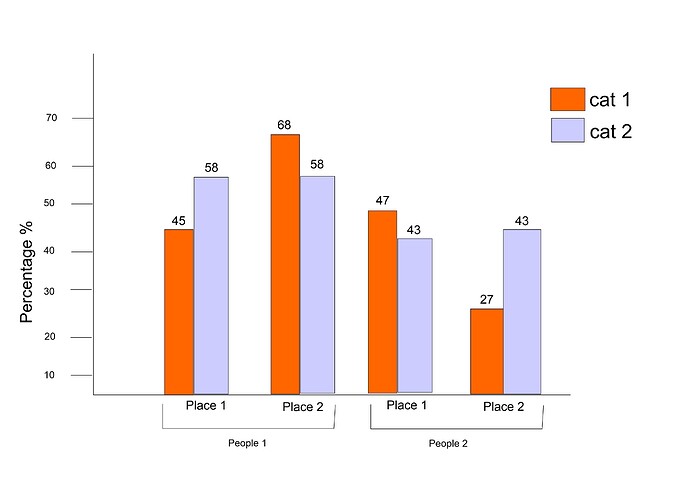Dear all,
I am completely a beginner to R programming but I can understand if I get help. I need to make a dodged bar graph using multple CSV files, around 4 files. I need to combine them to make a graph similar to in the representation added below. I want to plot the count of each file in the same graph as percentages in the x-axis and add only labels to the y-axis.
I am attaching a single .csv data here in the codes.Similarly, I have to add 3 more sets to the project. I need to consider only the Type field.
I would be really helpful if anyone could give me a fix for this.
Thank you for your patience
library(datapasta)
Ascending_VV <- tibble::tribble(
~FID, ~SourceID, ~Type,
0, 1, "Lineaments",
1, 3, "Lineaments",
2, 4, "Lineaments",
3, 5, "Lineaments",
4, 6, "Lineaments",
5, 7, "Lineaments",
6, 8, "Lineaments",
7, 9, "Lineaments",
8, 10, "Lineaments",
9, 11, "Lineaments",
10, 12, "Lineaments",
11, 14, "Lineaments",
12, 15, "Lineaments",
13, 16, "Lineaments",
14, 17, "Lineaments",
15, 18, "Lineaments",
16, 19, "Artifacts",
17, 20, "Lineaments",
18, 26, "Lineaments",
19, 27, "Lineaments",
20, 28, "Artifacts"
)
head(Ascending_VV)
#> # A tibble: 6 x 3
#> FID SourceID Type
#> <dbl> <dbl> <chr>
#> 1 0 1 Lineaments
#> 2 1 3 Lineaments
#> 3 2 4 Lineaments
#> 4 3 5 Lineaments
#> 5 4 6 Lineaments
#> 6 5 7 Lineaments
